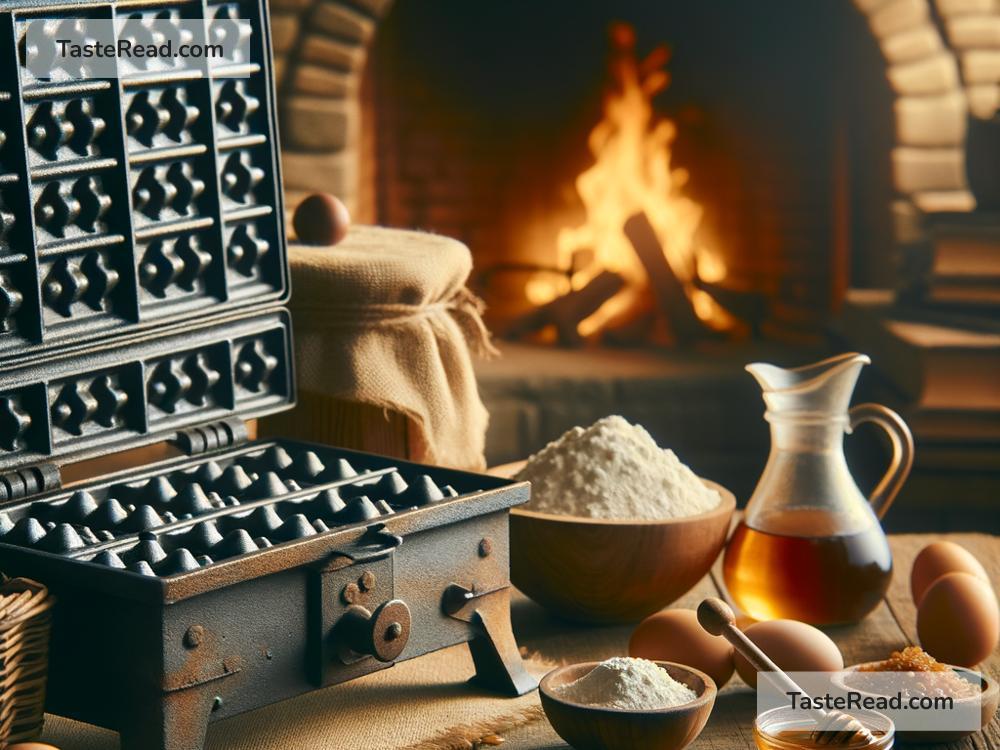The Origins of the First Waffle in Ancient Tales
Waffles are one of the most loved breakfast treats around the world. Their golden, crispy texture and signature grid pattern make them instantly recognizable. Whether served with syrup, fruit, or whipped cream, waffles have earned a special spot on tables everywhere. But have you ever wondered where waffles came from? Their story goes far back into history—so far back that ancient tales even hint at their origins! Let’s dive into the fascinating history of the first waffle.
A Simple Start in Ancient Times
Long before waffles became the breakfast dish we know today, their earliest ancestors were simple flat cakes made from grains and water. These flat cakes were cooked over an open flame or on a hot rock. Food historians believe that similar techniques for making these bread-like creations date back thousands of years, even to the Neolithic Era! At that time, people were just starting to grow grains like wheat and barley. Mixing these grains with water was an easy way to create a basic dough.
While these ancient flat cakes weren’t waffles exactly, they laid the groundwork for what was to come. Some cultures, like the ancient Greeks, had their own versions of flat bread or cakes. For example, the Greeks had a food called “obelios,” which was cooked between two hot metal plates. This method likely inspired the famous waffle-making process that developed later in history.
Medieval Europe: The Waffle’s Evolution
The story of waffles takes a more recognizable form during medieval times in Europe. By this period, people had begun using irons—special tools made of iron or steel—to cook batter between two plates. These irons were shaped with elaborate patterns, such as flowers, shields, or even religious symbols. When pressed together, they created a flat bread or cake with a beautiful design. These early waffle irons paved the way for the waffle’s famous grid-like appearance.
During medieval Europe, easy meals made from batter or dough were popular among villagers and nobles alike. Communities often cooked their batter in these patterned irons to make bread or flat cakes for festivals and religious ceremonies. Some food historians even think this is how waffles were introduced at church gatherings and celebrations. In fact, the word “waffle” comes from the Middle Dutch word wafel, which means “honeycomb” or “woven.” This name described the textured pattern left behind by the waffle iron!
These medieval waffles, however, were often very different from what we eat today. They weren’t sweet treats made with sugar and butter. Instead, they were simple, savory flat cakes made using grain, flour, and water. It wasn’t until later that waffles started incorporating delicious new ingredients like eggs, milk, and honey—making them even more flavorful.
A Tale from Ancient Belgium
Another fascinating chapter in waffle history points to Belgium, a country known for its incredible waffles. There’s an old tale about how waffles became popular in medieval Belgian towns. Legend has it that a knight returning home from the Crusades saw locals making flat cakes in iron presses with a grid-like pattern. Inspired by what he saw, he brought these flat cakes back to his community, where they quickly became a favorite snack.
Belgians took this early waffle idea and perfected it, creating the rich, fluffy versions we enjoy today. Even now, Belgian waffles are considered some of the best in the world. Their versions often use yeast to make the batter rise, giving waffles a light texture and soft interior.
Waffles Spread Through Europe and the World
Over time, waffles grew more popular across Europe. In France during the 1300s, recipes appeared that included eggs and cheese, making waffles even tastier. French street vendors began selling waffles to crowds during festivals and fairs, making them an accessible treat for everyone—rich or poor.
By the 1600s, sugar had become more common, so waffles turned sweeter. The addition of sugar made waffles a dessert rather than just a simple bread. Gradually, different countries adapted waffle recipes to their own styles. Some liked waffles thin and crispy, while others enjoyed them extra fluffy.
When Europeans traveled to new lands, they took their waffle-making traditions with them. Waffles eventually reached America in the 1700s, brought by Dutch settlers who made a version called stroopwafels—a thin waffle filled with syrup. Over time, Americans created their own waffle recipes, including the introduction of waffle irons that were easier to use at home. Waffles became a hit in the U.S., appearing in everything from diners to family kitchens.
A Delicious Legacy
The first waffles may have started as humble flat cakes made on hot rocks thousands of years ago, but they have come a long way since then. Cultures across the world contributed new ideas and techniques to make waffles tastier and more enjoyable. From medieval waffle irons in Europe to Belgian masterpieces, the waffle’s journey is truly remarkable.
Next time you bite into a warm waffle, remember its ancient roots and the generations of history behind it. A simple flat cake cooked over fire evolved into one of the most beloved foods in the world. It’s not just breakfast—it’s a bite of history!


